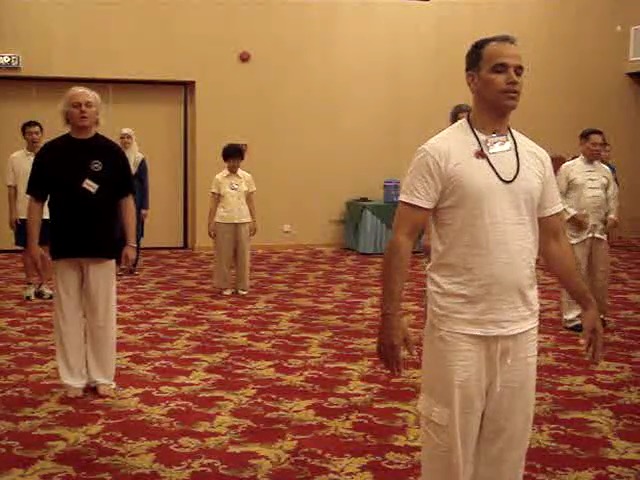HOW DO WE KNOW IF WE ARE PRACTICING CORRECTLY?

Intensive Chi Kung Course in Penang
Question
How do we know we are practicing correctly?
— Santiago, Ecuador
Answer
An excellent way is to compare our result with the result that exercise or art is purported to give.
If exercise or art X is purported to give result A, B, C, and you get A, B, C, then you have been practicing correctly. If you get P, Q, R, you have not been practicing correctly. For example, performing "Double Hooks" from the Eighteen-Lohan Art is supposed to give you some internal force. If you feel some internal force after practicing it, you have been practicing correctly. If you feel tensed or empty, then your practice has been wrong.
The fault can be traced to one, two or all of the following three factors: the art, the teacher and the student. If the art is not genuine, of course you will not get the result the genuine art will give. If the teacher is not competent, you may not get the result even when the art is genuine. If you are a bad student, you may not get the result even when the art is genuine and the teacher is competent.
Failing to appreciate this simple truth results in many people not getting the result they want as well as wasting a lot of time, in a matter of years. Chi kung is purported to give good health and vitality, yet a lot of chi kung practitioners still remain sick and weak. Taijiquan is an internal martial art, yet a lot of Taiji practitioners have no internal force and they cannot defend themselves.
The situation is worse in external martial arts. The two main aims of practicing any martial art is to be healthy and be able to defend themselves. Yet a lot of martial artists are becoming more and more unhealthy the more they train, and they also cannot defend themselves, otherwise they would not sustain a lot of punches and kicks in their sparring.
The above is taken from Question 2 October 2011 Part 1 of the Selection of Questions and Answers.
LINKS
Courses and Classes
